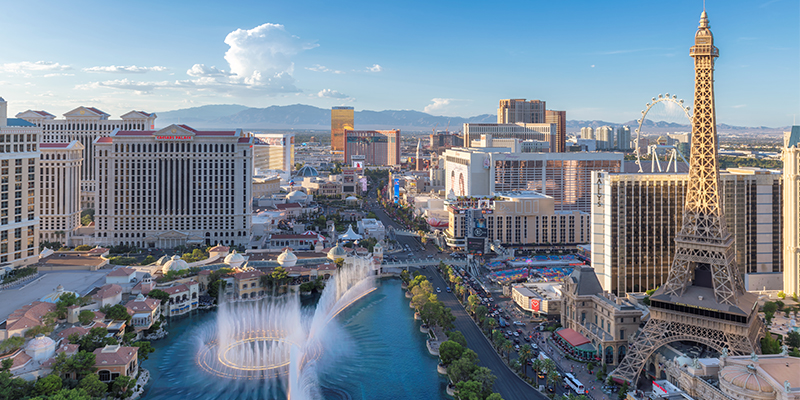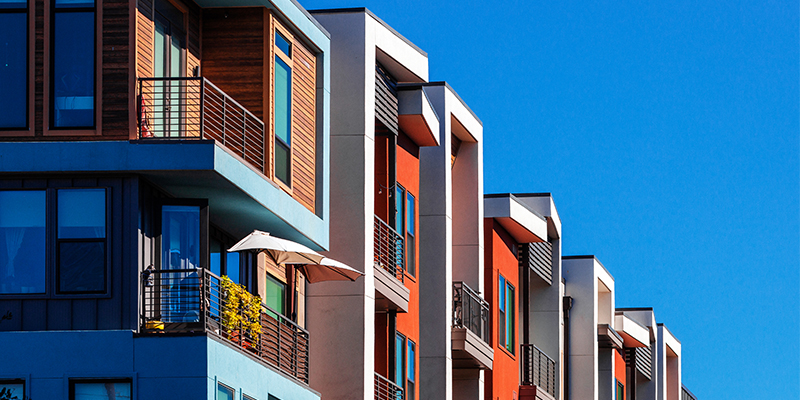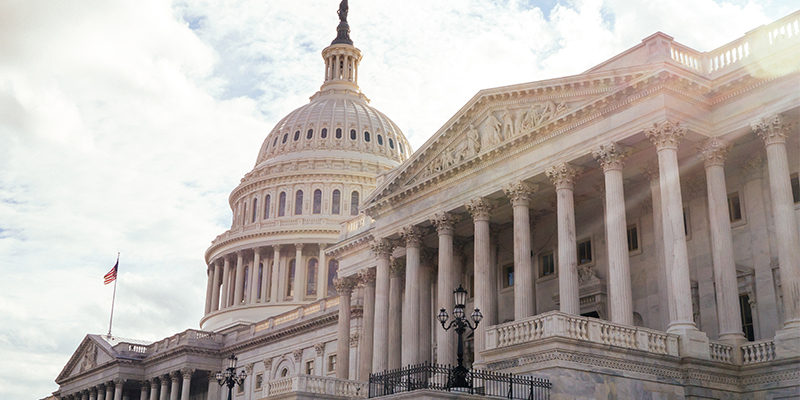The Las Vegas Strip is an iconic tourist hub that continues to evolve with new developments.
At this year’s CRE.Converge in Las Vegas, a session moderated by Michael Parks, executive vice president, CBRE, included panelists Jeremy Aguero, principal analyst for Applied Analysis; Tonia Chafetz, general manager for The LINQ Promenade and regional vice president of leasing and retail for Caesars Entertainment’s Las Vegas market; and Tick Segerblom, Clark County commissioner. They discussed how the area has evolved, the activities that generate the most economic impact, the role of local government in building economic density and what’s next for commercial real estate on the famed Las Vegas Strip.
“While the Strip is our central business district, it’s supported by hundreds of thousands of leisure and hospitality employees that call Southern Nevada home,” Aguero said. “Their ability to work there and provide that service to 40 million people who decide to get on a plane or get in a car and come to Las Vegas is important to us.”
Aguero presented what’s new and coming soon to the region – about $30 billion worth of major projects planned, proposed or under construction. At the top of the list is the $1.5 billion, nine-acre A’s stadium, built on the former Tropicana Las Vegas site. In addition to the A’s stadium, there’s also the redevelopment of The Mirage, which will become Hard Rock Hotel & Casino Las Vegas, and the redevelopment of the Riviera, including a new hotel and a residential condo project. New retail projects are also coming to the Las Vegas Strip, such as the 400,000-square-foot three-story shopping center BLVD, developed by New York-based Gindi Capital. It sits on the former site of the Hawaiian Marketplace and is expected to open in early 2025.
“When we think about Las Vegas, it’s important to remember that it’s not just about new hotel properties or amenities – it’s also about ways to facilitate some of that,” such as building out infrastructure, he said as he commended Sarah Watterson, president of Brightline West. The 218-mile, all-electric high-speed rail service will include a station in Las Vegas. “What Sarah and her team have done to bring forth the project has been remarkable.”
He also commented on other commuting improvements. “The investments we’re making in infrastructure along Tropicana Avenue will increase capacity and decrease congestion, not only for visitors but also for Las Vegas residents.” A Harry Reid International Airport expansion is also in the works. “An expansion is significant, as is the supplemental airport, which has the potential to better than double,” he said. “The total capacity we can have regarding airlifts coming into our community, improvements and thinking about I-15 infrastructure are all critically important. We’re being remarkably innovative relative to transportation.”
When it comes to the role that local government plays in encouraging and supporting the development of the Las Vegas Strip, Segerblom said, “What we’re best at is having our public works, engineering and planning departments work closely with the developers to make sure that we do it right. We’re so used to building these 3,000-room and 5,000-room buildings. During [the COVID pandemic], we built Resorts World Las Vegas, which no other city or county could have done. The best thing we can do is provide the resources, and we can do that by having a great infrastructure.”
Chafetz, who has more than 30 years of sales, marketing and management experience, spoke to retail trends. “What we’re seeing in Las Vegas is less of traditional retail and more of experiential retail and attractions,” she said, as these types of experiences create memorable and interactive customer experiences.
Luxury retail isn’t growing much but will be around for a while, she said. She has also noticed a softness in high-end restaurants in the food and beverage scene. “People are more interested in midtier and quick-service restaurants,” she said. “I think a lot of that has to do with the economy. People are still coming to Las Vegas, but they’re not doing five nice dinners out.”
The Strip has yet to see any new residential projects since the great financial crisis back in 2008. “The Great Recession made things very difficult and changed the landscape,” said Aguero. “But what changed it and made it difficult was that it was almost pure economics, so most projects failed.” He added, “In my world right now, the biggest issue I’m questioned on is housing affordability and attainability. If we don’t have people who can staff [these projects], it will be a problem for us. … That’ll be a defining element of how our community evolves over the next five years.”
As the session wrapped up, another topic was whether cannabis and the gaming industry could ever coexist. “We’re Sin City; whatever happens here stays here,” Segerblom joked. “I’ve already talked to several operators who have rooms set aside for dispensaries and lounges. It fits what we do. It’s going to happen. How fast it happens, I’m not sure.”
In terms of the future and the growth of the Las Vegas Strip, Chafetz is hopeful that Las Vegas won’t slow down anytime soon. “We’re never going to have a shortage of people bringing us new, fresh and interesting concepts because we’re on everybody’s radar in the top two or three places they want to be.”
This post is brought to you by JLL, the social media and conference blog sponsor of NAIOP’s CRE.Converge 2024. Learn more about JLL at www.us.jll.com or www.jll.ca.









